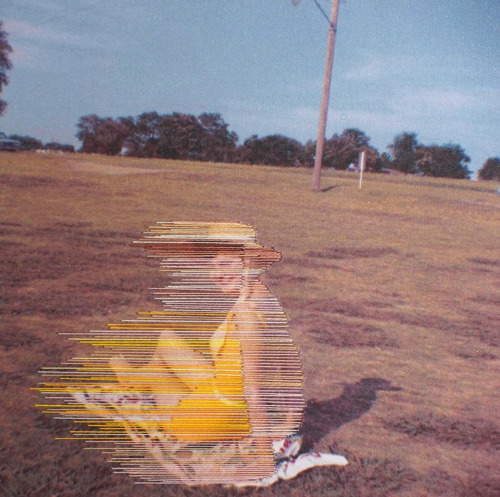I was going to try and write the intro in the style of Russell Brand this week as a sort of ‘topical’ riff, but then I realised that a) that wouldn’t actually be funny in the slightest given the horrible stuff he’s alleged to have done; and b) that the rest of Curios is already written in a style that might best be described as ‘somewhat overdone’ and that you probably didn’t need me doing a tuppeny-gorblimey act on top of all the garbage that is to come. You should be grateful, really – think how much WORSE this could have been!
I am still Matt, this is still Web Curios, and you shouldn’t EVER trust ANYONE who wears trousers that tight.

THE SECTION WHICH THINKS THAT IF YOUR FIRST RESPONSE TO THE BRAND STUFF IS ‘YES, BUT HOW CAN I USE THIS TO FCUK THE BBC?’ THEN YOU ARE A BAD PERSON, PT.1:
- The Artificial Client: Those of you who work in advermarketingpr (or associated, adjacent, similarly-made-up ‘jobs’) will be aware of the unique and particular pain that comes from having ideas that you have SLAVED over (or, more likely, come up with in one of the endless, airless ‘brainstorms’ that constitute the risible pantomime that is ‘agency life’) considered, assessed and then finally dismissed out of hand by some double-figure-IQ-moron who’s spent the whole presentation staring at their phone and wouldn’t know decent creative if it bit them on the ar$e – it’s GREAT, isn’t it? Still, I appreciate that not all of you are lucky enough to have experienced this particular joy – but worry not! Now everyone can have their creative babies eviscerated before their very eyes thanks to this fun little AI-based toy/game thing, created by Dentsu in Amsterdam – click the link, choose the client persona you’d like to have analysing your work, upload the document you’d like critiqued and GO! There are three different critical viewpoints you can access – the ‘ruthless critic’, the ‘confused creative’ and the ‘idealistic dreamer’ – and they will happily analyse your UI design, your identity design or your TVC script in SECONDS to tell you exactly what is wrong with it, and even if you don’t happen to have a suitable bit of work to hand you can get the site to generate something for you which will then be eviscerated by the digital peanut gallery. This is obviously a silly toy, but it’s fun and nicely-made, and has a pleasing degree of polish to it, and whilst you OBVIOUSLY shouldn’t take any notice of anything that these AI personas tell you (no, you ARE a talented creative! Don’t listen to them!) it’s a decent reminder of the way in which you can use LLMs to critique and analyse written work and elicit feedback.
- AI De Bono: Speaking of creativity – SEAMLESS! – you will all OBVIOUSLY be aware of Edward de Bono and his collection of multicoloured hats as a series of tools to develop creative ideas (in the unlikely event that you’re not – WHAT HAVE YOU BEEN DOING WITH YOUR LIVES?! – you can learn about the theory here); if it’s a technique that you use as part of the creative process, you might find this digital prototype thing useful. Matt Webb has been playing around with generative AI and has created this website which features a selection of rooms, each corresponding to one of de Bono’s different hats (you know what? I am sure it’s a decent theory and I am sure it makes all sorts of sense and can be genuinely helpful, but, equally, I really can’t get past the fcuking hats) and as such to a different technique for developing and interrogating ideas. Each room gives you the chance to talk through your thinking with a different AI interlocutor, each embodying a different way of thinking about ideas, which you can navigate between using the arrows in the bottom-right – so the Yellow room will give you positive feedback, the Blue room will interrogate the presentation of the idea, the White room is all about gathering facts…you get the idea. This is, at heart, just a selection of different conversations with a pre-prompted LLM, but, again, I think there’s something interesting about using the conversational interface as a means of interrogating one’s thinking.
- Prices: Ok, this is…quite niche, and is only likely to be of practical use to you if you’re currently living in Austria – are any of you currently living in Austria? – but I really really like the thinking behind the project and figure that it might be something that could inspire similar projects elsewhere. You can read a full rundown of what this is and why it exists here but, in summary, inflation in Austria is, muchlike in the rest of Europe, going somewhat mental, and as such food prices are a real concern for many people. In response to this, the Austrian government committed to maintaining a database tracking food prices at different supermarkets across various product categories, to help citizens keep track of changing costs and to guard against price gouging by retailers…but they kept saying it was too hard, and would take too long, to do in any meaningful way. So one Mario Zechner decided to take matters into his own hands, and used all the various supermarket website APIs to set up his own price tracking website for literally every single grocery item sold by all the shops, and in so doing discovered that multiple retailers were colluding when it came to price rises, that they were taking advantage of ‘shrinkflation’ to screw consumers while raising prices, and a whole load of other stuff besides – which was picked up by the press, and let to an apparent shift in pricing behaviour by the supermarkets when the story was taken up by the Austrian competition authority. Which is, fine not HUGELY exciting as a story, but it is A VERY GOOD THING, and a lovely example of how nothing is ever as expensive, slow and complex as government (and specifically government digital departments) like to make out it is. Can someone do this in the UK, please? I know I ask this every week, but this one really is a good cause.
- Collage Diffusion: Ok, ok, this is admittedly a *bit* crap, but I really like the potential inherent in the tech – it’s basically a layered AI image generator, which lets you create…er…layers within an image, making for a slightly more reactive and easy-to-control creative process – giving you a far greater degree of granular control over the individual elements within a composition (you don’t actually need me to explain this to you, do you? Er, sorry). Except this is running off a model that’s a couple of generations old, it feels like, and so everything you produce with it looks a *bit* like a potato, but this feels like it’s a feature that will end up coming to the other platforms sooner rather than later. Oh, and seeing as we’re on AI image generation, here’s the announcement about DallE-3 that’s launching in a few weeks’ time – the main takeaways here are the fact that it looks a whole load shinier, it can seemingly generate readable text, it has been guardrail hard to stop you creating images of famous people (BOO) or images ‘in the style of’ living artists (A Good Thing), and it’s apparently going to be easier to tweak individual elements within a generated image thanks to the interface being integrated with GPT. So that’s nice.
- The History of Ukraine: It’s astonishing to think the war in Ukraine has been going on for 18 months now, and that it might well continue for at least as long again. This site is a celebration of the country’s history, presenting the events that have shaped Ukraine over the course of human history in a rather lovely timeline, focusing in particular on ‘previously unknown and unpublished findings about Ukraine that are not found in textbooks or Wikipedia. All materials on the website are the result of years of research in European archives, letters, and newspapers that were long ignored by “old school” historians.The value of these materials is that they prove that Ukraine has always been a full-fledged subject of European political relations. They also highlight Ukraine’s image as a victorious country with a rich history, culture, and achievements, which disproves the propagandistic narratives of our neighbor and the imposed image of a suffering country.” This is a gorgeous piece of webdesign.
- We’re Safety Now Haven’t We: It’s rare that I find cause to celebrate the communications efforts of a national health and safety executive, but I think we should ALL applaud the work being done by the US’s Consumer Product Safety Commission in guardian the safety of North Americans via the medium of song. Yes, that’s right, while your BORING and DULL and STAID government communicates to you via tedious leaflets and yawnsome public information films, over in the US the CPSC has instead decided to communicate its ‘keep safe, don’t die!’ messaging via the medium of an entire album’s worth of safety-focused bangers – honestly, I am not joking, these songs are…quite good! From the oldschool hip-hop of ‘Protect Yo Noggin’, a paean to the importance of wearing a helmet when on a bike or scooter, to the remarkably-polished pop of ‘Going Off Like Fireworks’ (unsurprisingly all about the importance of not shooting yourself in the face with a Roman Candle), there’s a full record’s worth of safety-related bangers to enjoy, and which you can download if you like so that you can listen to them ALL THE TIME. This is just brilliant, from the upsetting name to the copy on the Page (“Death by firework is bad”) and I applaud everyone involved in its creation.
- Punta: What do we think about ‘digital nomads’ these days? Are we pro? It does rather feel like it’s slightly less socially acceptable in 2023 to sit in a hammock on a Caribbean beach, getting paid 10x the national average wage to phone in a content calendar while you’re waited on hand and foot by the local service economy, but, equally, it seems like there’s still a significant number of people for whom the lifestyle continues to be aspirational and appealing. If you happen to be one of them, you might find this app useful – Punta sells itself as a ‘digital nomad hub’, which basically lets anyone self-styling themselves as such set up a profile on which they can share details of the sort of work they do, their travel plans, connect with and message other likeminded folk, and generally BUILD COMMUNITY (or, inevitably, attempt to use the app as some sort of unofficial Tinder analogue). Which I’m sure sounds lovely, but all I can think of as I type this is of how perfect this seemingly is for anyone who wants to stalk, rob and potentially murder digital nomads – so, er, BE CAREFUL OUT THERE GUYS.
- The Ig-Nobel Awards 2023: I missed this last week, meaning I am LATE with this link and I am SORRY. Still, if you’ve not already had your fill of the annual ‘the most stupid academic research conducted in the past 12 months’ rundown, click the link and revel in the beautiful, pointless wonder of the pursuit of esoteric knowledge as embodied by these 10 projects – my personal favourite, and which I really don’t think received enough attention, is the work which ‘used cadavers to explore whether there is an equal number of hairs in each of a person’s two nostrils.’ WHY?!?!?! WHAT POSSIBLE BENEFIT COULD THERE BE TO KNOWING THAT?! Infuriatingly, the actual research paper in question here is behind a paywall, meaning that I am currently unable to find out what the answer is to the question which I can tell is going to cause me no end of low-grade psychic pain for the remainder of the day.
- Tamashell: A website which catalogues the multifarious different Tamagotchi designs that have appeared over the decades since the battery-operated ‘pets’ first appeared on the market – obviously this will mainly appeal to any of you with an obsessive fixation on 90s electronic toy design and will, perhaps, not *quite* grab the rest of you as much, but I find the endeavour generally heartwarming and particularly enjoyed this, from the ‘About’ page: “I decided to create this website after finding that while the internet was chock full of images of Tamagotchis, there really wasn’t a single source where I could find all of the different designs in once place. Understanding that there are hundreds of different shell designs released in different regions all over the world, I knew this would be a significant undertaking, but I also knew that it was a worthwhile endeavor in order to share information not easily attained elsewhere.” YES IT IS A WORTHWHILE ENDEAVOUR! THIS IS WHAT THE WEB IS FOR!
- Twilly: Inexplicable-but-shiny-luxe-videogame-corner! We’re back in the world of luxury goods websites, this time with Hermes and this rather pleasing little (mobile-only) webgame, in which you inexplicably play as…a piece of ribbon, which is equally-inexplicably blowing around the streets of New York – guide the ribbon as it travels through the nicely-rendered 3d cityscape, collect some stuff, get a score, don’t win a prize! This is totally pointless and I have no idea exactly who it’s aimed at or how the doubtless-brilliant minds behind it think it’s going to help them flog more perfume – as ever with these things, tbh, can someone who works in the industry maybe explain the ROI of this stuff to me please? – but it is VERY pretty (the moving subway trains are a nice touch) and a pleasing 3 minute distraction from whatever horrible things are happening in your day-to-day life.
- Ramen Haus: Do you remember Rotating Sandwiches? OF COURSE YOU DO IT WON THE TINY AWARD IT IS NOW WORLD-FAMOUS FFS! Anyway, this is like that, except instead of rotating sandwiches you are instead presented with photographs of bowls of ramen, also spinning gently in the digital non-breeze.
- SwipeWipe: This is a nice idea, and a potentially-useful tool to encourage you to declutter your phone’s camera roll. SwipeWipe is an app that introduces a Tinder-like interface to your photos – you get presented with them one at a time, and made to choose whether to swipe right to keep them or swipe left to delete them forever, forcing you to determine whether or not they SPARK JOY or not. Which seems like a nice little gimmick, but immediately made me think of a dark extension to this where every day your phone presents you with a pair of contacts, or apps, or files, and you are forced to choose which to keep and which to delete FOREVER, which I think would introduce a neat element of fear and jeopardy into the otherwise-mundane daily interaction with your device.
- MSCHF x Reebok: On the one hand., I am slightly surprised that this is (afaict) the first big-name brand to collaborate with MSCHF on something; on the other, I am slightly surprised that they have done this as, to my mind at least, it rather cheapens their brand (but then again, what do I know? They are lauded as some of the most creative digital stunt people around at the moment, and I write an overlong newsletter to an audience of what I am fairly certain is tens of people, so perhaps I should just wind my neck in tbh). Anyway, MSCHF have partnered with Reebok to release a special edition of the company’s legendary ‘Pump’ trainer which instead of the traditional single pump (which as anyone who has ever actually seen a pair of the shoes in the wild can attest, makes literally NO DIFFERENCE WHATSOEVER to the shoe’s fit) instead has NINE OF THE FCUKERS, meaning you can literally inflate any part of the shoe’s interior to your exact specifications and (probably) jump ten foot in the air or something. These look VERY silly, but in a knowing enough way that they will inevitably become fashion must-haves amongst a particular coterie of dreadful fashion cnuts.
- Sh1trentals: OH YES. This is a great idea – although obviously it would be a nightmare to run and administer, for which reason I can’t imagine it’ll be a going concern for that long. Sh1tRentals is a website for renters to share information and details about bad rental properties and bad landlords, to help guard against exploitation and price gouging and generally, well, sh1tty behaviour on the part of the rentier class. To quote the site’s fouonder, “This website is about giving power back to renters. As a renter, landlords and real estate agents have access to so much information about you, but you don’t get that same level of transparency from them. Real estate agents often provide photos of properties that are years out of date, and don’t tell you what it’s like to actually live there. You don’t get to enter into a new rental knowing how difficult it might be for you to request basic repairs to be completed. This website is here to help. It will always be free, and there will be no ability for landlords or real estate agents to pay for reviews to be removed. Do your part to help your fellow renters by writing an anonymous review of your rental property or real estate agency. At this stage, I’ll be reviewing each submission each night and uploading the submissions to the page, so if you don’t see your review immediately, don’t stress!” As far as I can tell this is an Australian thing, and I am unsure whether they are accepting international submissions, but, well, if you have a landlord you need to warn the world about why not slag them off with impunity on this site?

THE SECTION WHICH THINKS THAT IF YOUR FIRST RESPONSE TO THE BRAND STUFF IS ‘YES, BUT HOW CAN I USE THIS TO FCUK THE BBC?’ THEN YOU ARE A BAD PERSON, PT.2:
- Stained Glass: I’ve always thought that I’d quite like to spend a few days making stained glass – getting high off the lead fumes, maybe illuminating some manuscripts in my spare time…sadly I am yet to receive the call from the Abbot (that’s how it works, right?), and so I’m having to make do with this digital version, which is very pleasing indeed and which lets you click to create your own variegated glass masterpieces, and which I highly recommend you use with the volume up as the sound of breaking/snapping glass that accompanies your every click here is just *delicious*. This is very, very therapeutic, so maybe save this for Monday morning when you might need it a bit more.
- The Vulgar Wave: This is a couple of months old now, but it did the rounds again this week in the wake of the Brand stuff and the reevaluation it seemed to spark amongst the British media of the 00s and the very particular way in which popular culture manifested itself across media for a good five years or so – specifically, the way it was characterised by prurient sexuality and a sort of general grubbiness. The link takes you to a Twitter thread which pulls together various examples of The Way Things Were Then and WOW do some of these hit differently at a distance of 15 years or so – any of you who aren’t from the UK really should take a moment to enjoy this selection of clips from TV shows, old adverts and the odd music video, which really give you a feel for the prevailing mood of the era. This is a hell of a selection which runs the gamut from accepted classics of the genre (Rebecca Loos masturbates a pig to happy completion on English TV!) to deep cuts (an advert featuring an unpleasantly-sexualised talking boiler!) and gives a pleasingly-lumpy picture of the odd cultural topography of The Past (and, possibly, a clue as to why the generations that grew up during and immediately after this period are perhaps a touch more censorious than their forebears).
- All The Poe: This is a great resource – all Edgar Allen Poe, all in once place, pulled together by one Joshua Maldin, who writes: “This is a collection of Edgar Allan Poe’s works, some 130 pieces, presented with optimized legibility and no ads or trackers.” What more could you possibly want? If nothing else this site looks sufficiently sober that you could probably get away with spending a significant chunk of the day just reading Poe short stories in the office without anyone realising.
- Couture To The Max: What were YOU doing at 7? I expect you can’t remember, what with it being a fcuking AGE ago (so OLD, so decrepit, so close to death!), but I’d hazard a rough guess that it probably involved a bit of school, a bit of playing, and an obsessional interest in something like dinosaurs or Polly Pocket – which, frankly, demonstrates exactly the sort of crippling lack of ambition and long-term goal setting which has seen you end up where you are. Contrast yourself with Max Alexander, who at the tender age of not-even-8 has already, er, established himself as an actual fashion designer and had a runway show in LA. This is Max’s website, which I am sharing with you because…well, in all honesty, because there’s something sort of wildly-sinister about the whole thing. I mean, just read this: “Max Alexander was born in 2016 in Los Angeles, California to a Canadian father and American mother. He graduated from Little Dolphins by the Sea, an arts-based preschool, in 2021. During his time there, he was heavily influenced by the works of Vincent Van Gogh, Yayoi Kusama, Frida Kahlo and Alexander Calder. Max announced to his family in 2020 that he was a dress maker. Encouraged by his mother, also an artist, Max began designing, draping and sewing, and launched his Couture to the Max label in 2021.” I mean, fine, it is of course entirely possible that Max is an intensely-precocious genius and that he really WAS influenced by the luminaries there named; it’s, er, at least *equally* possible, though, that his parent(s) have seen an opportunity here and have grabbed it hard with both hands while their eyes do that creepy Scrooge McDuck dollar signs thing. The quote from People Magazine – “Boy, 7, Who Says He Was Gucci in a Past Life” – doesn’t *scream* ‘normal child’, and if you scroll down to the bottom and see Max’s designs you may be…confused as to the adulation being apparently bestowed upon him. Still, whatever is going on here I think it’s fair to say that it’s unlikely that poor Max is the driving force behind it, and as such let us wish him well in his pursuit of couture glory (and in the inevitable, messy process of divorcing his family which I predict will kick off around 2029).
- Antique Book Patterns: Via Kottke, these are lovely – a Flickr album, compiled by the University of Bergen in Norway, which compiles the patterned endpages of a selection of books published between 1890-1930. Which, fine, you might not immediately think of as being a gorgeous aesthetic treasure trove, but you would be WRONG because that is exactly what it is. SO much excellent design inspiration in here for any of you who are interested in that sort of thing.
- Simulation: This is interesting – you remember that ‘AI Showrunner’ from a few months ago, that software which purported to let anyone spin up an entire AI-generated episode of a TV show based on a few simple parameters? OF COURSE YOU DO! Well the company behind the tech has been doing some press this week, which is how I stumbled across its website, and WOW is this simultaneously very scifi and also very creepy and pretty unbelievable! The pitch the company’s making is effectively that it can create AI ‘agents’ which can operate with a degree of autonomy within a defined virtual environment – so you can effectively set up your sandbox, invent your principal players, wind them up and watch them go. “At Simulation Inc, we’re redefining the contours of existence, conjuring a universe where the line between the physical and the virtual blurs into oblivion. Our mission, as audacious as it is intriguing, is to birth a new kind of life: the world’s first genuinely intelligent AI virtual beings. Each one, a mirror of the human psyche, navigating the tumultuous seas of emotions and experiences in a digital cosmos of our creation.” Exactly how The Simulation think that that is going to magically going to result in compelling narratives that people actually want to watch is, at present, unclear, but it’s worth watching the videos on the website landing page to get a feel for the madly-overblown way they talk about the simulated agents and their ‘freedom’ to act independent of direction – scroll down to the bottom of the Page to discover the three formats that the company is apparently working on right now, which run the gamut from, er, space scifi to space cowboy scifi to ‘planet of the apes, basically’ scifi, and sigh quietly as you realise that we are apparently condemned to consume the same media forever (just AI-generated and, probably, worse).
- Nuclear War Simulator: Have you ever wanted to run an incredibly-detailed simulation of what exactly would happen if the people with access to the nuclear buttons all simultaneously decided to say ‘oh, fcuk it, we’re all screwed anyway, we may as well use these fcuking warheads’ and set them racing across the skies? GREAT! Nuclear War Simulator lets you do exactly that – it’s a PROPER piece of software and as such requires a download, but once you’ve installed it you have SO MUCH POWER at your fingertips! “Nuclear war simulator is a detailed realistic simulation and visualization of large-scale nuclear conflicts with a focus on humanitarian consequences. There are currently over 13000 nuclear weapons on this planet of which over 9000 are in military stockpiles. This software should help you answer the questions: what will happen if Russia and the United States or India and Pakistan use their arsenals? What will happen to the population of a country in a nuclear war? What will happen to me and my family? You can design warheads, missiles, and carriers, place them on the map and execute attack plans to tell a credible story about how nuclear conflicts play out and what the consequences are. Using a high-resolution population density map and realistic weapons effects like blast, heat, and radiation you can make an estimate of how many people will die in a conflict. Individual humans can be placed on the map, travel, and take shelter to analyze the effects and estimate injuries and survival probability.” You might argue that this is all a bit macabre – and you’d probably be right, but, be honest, who hasn’t wanted to make the massed ranks of the world’s populations run for cover, like ants from the glare of a magnifying glass, as terrifying thermonuclear death rains from the skies? NO FCUKER, etc!
- Are You A Voicecel?: No, you are not, because it is a made-up concept that doesn’t exist! Still, if you are a man and want another reason to feel slightly-inadequate then why not upload a clip of yourself speaking to this website which will apparently then analyse your voice and tell you whether or not it is ‘squeaky and unaesthetic’. This has obviously been made by some very confused young men and as such one probably shouldn’t point and laugh but, well, LOL! LADS HAVE YOU EVER ACTUALLY HEARD FAMED INTERNATIONAL SEX SYMBOL DAVID BECKHAM SPEAK? Anyway, try it out for yourself and see if you too can attain the exalted status of ‘certified chad’ based on, er, having a deep voice. Dear God I am SO GLAD I am not a teenager in 2023.
- The Metamorphosis: Or, specifically, ‘a not particularly good attempt at creating a short film based on Kafka’s ‘Metamorphosis’ using text-to-video AI tools’ – this is obviously a complete mess because, well, the tech is nowhere near good enough to produce anything other than a hideous, inchoate mass of indeterminate shapes, but at the same time there’s the odd frame here and there among the five minute runtime that hints at some sort of potentially-interesting aesthetic and stylistic possibilities beginning to be thrown up by these systems – quite a few of the shots have a very distinct ‘cut scene from a late-90s PC game’ feel to them which I find oddly appealing.
- RailCams: Do you like trains? Do you like trains A LOT? Frankly if the answer is ‘yes’ then it’s entirely possible that you’ll already be aware of this site which is an INSANELY comprehensive directory of train-related webcams from around the world, over 450 of them to be precise. Want to watch freight trains slowly moving backwards and forwards just outside Zurich? OF COURSE YOU DO! Want to spend a bit of time checking out what’s happening on the platforms at Riomaggiore in Italy? I MEAN, YES! My word, then, is there a set of train-based treats in store for you.
- Unusual Internet: I really like this – Unusual Internet is a site that collects examples of less-than-typical user interfaces, displaying them in a manner that itself is somewhat unusual: “The interfaces of most websites follow the same design principles over and over again. In short, websites tend to look the same. The interfaces are simplified, the design is standardised. We rarely come across provocative or unusual interfaces. Designers should experiment more and try something new. Out of the comfort zone and into the unusual. To achieve this, the »Unusual Internet« course took a close look at UI elements (buttons, typography, scrolling, etc.). Students experimented with these elements on a weekly basis. A selection of the experiments can be seen here.” There are some lovely examples buried in here – you have to click around a bit, but there are a few wonderful examples of interesting and unusual webdesign to explore (including this one, which is my personal favourite I think).
- Interpreted: Ooh, I really like this – an art project which combines the analogue and the digital to rather beautiful effect, with artist Jonny Scholes creating woven tapestries depicting an entire day’s news as interpreted by an AI: “Drawing on a decade of experience as a software developer, Scholes has created an automated program which continually reviews all news articles as they are published around the world. An AI tool is employed to create a single image that represents each day. Using generative art techniques, the days are collected into months, and incorporated into a unique tapestry design. The result is autonomously sent off to be woven and eventually delivered by post to Jonny Scholes’ studio.” The resulting tapestries, which you can see on the site, have a wonderfully deep-fried quality which links them back to the digital materials that were the starting point for their creation, and there’s something rather beautiful about the oddly-70s-ish aesthetic contrasted with the modernity of the tech at play here. Some of the work’s available for sale, should anyone fancy saying thanks for a decade of words and links by buying me a lovely tapestry gift.
- Timelineify: Listen to an artist’s catalogue in chronological order thanks to this Spotify tool – NO, YOU’RE WELCOME!
- Learn To Code With LinkedIn: We are, thankfully, now at a distance of a decade from the boom in ‘LEARN TO CODE!’ exhortations, and people are now a little more realistic about the employment prospects available to you as a result of your being able to code some basic HTML and Java – what with the imminent AI-ifinication of a significant proportion of the bottom end of the dev market it’s perhaps not QUITE the career silver bullet you might have been sold back in the day, but, equally, having a basic working knowledge of How Some Of This Stuff Works is genuinely useful (I say that as someone who can’t write a fcuking line, by the way, but who can just about understand the principles behind it). Should you have decided that NOW IS THE TIME for you to finally master the Dark Arts (not THOSE ones ffs) then you could do worse than check out this selection of free learning resources available of the world’s worst social network – this is available til mid-December, so there’s plenty of time for you to give it a go.
- A Trillion Tiny Little Poems: This is rather lovely. The developer describes it as such: “a trillion / quite tiny / little poems generates untold billions of quite tiny little poems in a miniature haiku format of 4 then 3 then 4 syllables…or at least it tries too but sometimes the source poems get their meter completely wrong for reasons i am simply unable to explain (reason/explanation: i am quite poor at poems)…rather than a trillion tiny poems there’s only 5,268,024, but maybe 5,268,024 is the secret definition of a quite tiny little trillion or somethging, maybe, perhaps, possibly. anyway occassionally it blurts out something surprisingly beautiful though more often as not it just churns out rubbish” Many of these are gibberish, but that makes the occasional glimpse of meaning that crops up even more special – I just got this, and may now get it tattooed somewhere intimate: “some poems were / bleak roses / quite the relief”
- The British Seaside Simulator: Published just too late to make last week’s Curios, this is the latest bit of silliness from Matt Round who has coded a web EXPERIENCE that lets you enjoy the peculiar purgatory that is the British seaside – specifically, the British seaside as experienced from the inside of a slightly-too-warm estate car in which you are having a desultory ‘picnic’ (limp, sweaty cheese sandwiches on wholemeal bread) as the horizontal rain beats across your windscreen and the sound of a provincial radio DJ whimpers tinnily into your ears. This is really beautifully-observed (the radio stations in particular are a lovely touch), although it’s so intensely well-realised that you might find it…a bit depressing tbh.
- Fridge Floppers: Move the fridge. That’s it. No more, no less. MOVE THE FRIDGE! This is a very enjoyable little puzzle game which has a pleasingly-kinetic feel to the controls and movement.
- Pacman The Roguelike: What might Pacman look like were it designed now, and had all the needless bells and whistles of the modern triple-A game experience grafted onto its basic gameplay? It might look a little like this tbh – a really smart play on the traditional Pacman which adds pointless joke mechanics like ‘companions’ and ‘crafting’ and ‘levelling’ which initially feels like a simple gag but which you realise as you play actually creates a pretty interesting new play experience whilst also working on some level as SATIRE. This is far better than it needs to be, and a really fun way of killing 30 minutes before you can get to the pub/back on the pipe (delete per your personal preferences).
- Connections: You know the Only Connect ‘wall’ game which the NYT ripped off earlier this year? YES YOU DO STOP LYING TO ME! This website lets you make your own, bespoke versions of the game to share with friends – select your categories, select your words, and then share the link with anyone you fancy to see whether they’re smart enough to crack your doubtless-fiendish conundra. If any of you fancy making one of these and sharing it with me, I can chuck it in next week’s Curios for THE COMMUNITY to test themselves against.
- A Little Game Called Mario: This is an interesting idea – a collaborative project to create a fan-made Mario-a-like game, with the twist that the code repo is open which means anyone can go in and tweak the gameplay, level design, etc, making the whole thing a massively-collaborative endeavour. The resulting title is a messy combination of trad Mario mechanics and a lot of VERY HARD platforming bits (and, bizarrely, a level that appears to have been inspired by Dance Dance Revolution) including quite a lot of bullet-hell-style bits; basically this is an exercise in level design sadism and experimental, barely-functional mechanics, but it’s fascinating to see how the different people across the community approach level creation. There are LOADS of different examples of creative design in here, so it’s worth having a bit of an explore and a play with a range of different levels to get a feel for it.
- Ad Nauseam: Finally this week, via Rosie & Faris, comes this rather fun little platformer themed around working in an ad agency. SHOOT THE CLIENT! DODGE THE FEEDBACK! SEE IF YOU CAN LEAVE THE OFFICE BEFORE MIDNIGHT DURING A PITCH WEEK! This is rather good, and you should 100% dedicate 20m or so to trying to complete it.

THE CIRCUS OF TUMBLRS!
- Falling Down The Internet Hole: A *delicious* Tumblr compiling links to sites with a particular, vaguely-old-school, often Geocities-ish aesthetic – this really is a portal to some top-notch web vibes and some EXCELLENT odd internet, I highly recommend giving this one a click.
- Obscure Videogames: Sharing screenshots and gifs and marketing materials from old games you might not have heard of – there is some GOLD in here, but if nothing else I urge you all to click and scroll down just far enough so you can enjoy the truly majestic 16-bit graphical representation of a wrestler ripping their leotard off which, honestly, is practically erotic.
THE TROUGH OF (INSTA) FEEDS!
- Supinatra: Impressive-if-creepy-and-a-bit-body-horror-y makeup and accessory design by Russian artist Maria Luneva (via Blort).
- Surface of Wikipedia: Created to act as a sort of a negative impression of the storied ‘Depths of Wikipedia’, this Insta account instead celebrates the incredibly mundane on Wikipedia – you will be genuinely amazed at some of the things documented here that apparently have Wikipedia pages (the concept of ‘something’, for example – WHY DOES THAT NEED A WIKIPEDIA PAGE?), and this is another in the long, long list of reasons why Wikipedians are, honestly, some of the most magically-peculiar people on the planet.
LONG THINGS WHICH ARE LONG!
- Leftwing Britain: Lol, ok, not quite, but this is genuinely interesting information which was published this week as part of the annual publication of the British Social Attitudes survey, now in its 40th year, which tracks public opinion on a range of issues, and which this year threw up some interesting data on how exactly the British think of poverty, opportunity, social mobility and the role of the state and the individual. This is a really good piece of analysis by Sam Freedman, who looks at the numbers and the surprising conclusions that it’s possible to draw from them – to whit, that people in the UK are increasingly likely to believe that state intervention to reduce income inequalities is A Good Thing, and that there is a parallel rise in the numbers of people who believe that greater public spending and state intervention would be of benefit to the country – there’s SO much interesting stuff here digging into where people sit on a left-right spectrum, and how that varies by age, and how the numbers perhaps don’t look quite as one might expect, and why that might be, and why (fingers crossed, eh?) the Tory party lurching further to the right after its hopefully-inevitable electoral defeat next year will see it fcuk itself even further into the sun from an electability perspective. This is interesting AND useful, and to to be honest if you find this interesting you could do worse than check out the whole report here.
- The Noughties: I know a couple of people who have slept with Russell Brand – I am aware that they are not in an exclusive club – and while there was never any indication from them that they had anything other than a splendid time in the man’s company, I can’t say that this weekend’s revelations came as a huge shock to me. What has been interesting is the speed with which the media has rushed to condemn the prevailing culture of the rough 2004-12 era (see the link to ‘Vulgar Britain’ earlier on), and the number of pieces that have sprung up all doing the same hand-wringing bit, often from people who I remember full well being very much ‘of the establishment’ at the time and who I don’t recall being anywhere near so censorious when they were enjoying the gak back in 2006. Anyway, the main link here is to Zoe Williams in the Guardian, who is very good on the broad era but who, oddly, fails to mention the Guardian’s own role in elevating that sort of culture by giving Brand a column for years when he was at the height of his ‘jellied eels and fingering and Proust, oh my!’; schtick; if you’re in the market for more, then Sarah Ditum (yes, I know, but) in Unherd (yes, I know, but) is also good on the prevailing culture of the time; and this thread by Caspar Salmon does a good job of deconstructing the relationship between Brand and laddism and how both evolved as a reaction to the perceived ‘threat’ to traditional masculinity posed by the rise of (at least the appearance of) feminism in the popular culture of the 90s. I had a genuinely odd (and not wholly pleasant) moment this weekend, when I saw this story about Noel Fielding and Pixie Geldof from 2007 doing the rounds and I realised that it was entirely plausible that the story was placed by the PR agency where I was working at the time – it didn’t feel…great, I must say. This tweet by Rob Palk resonated with me quite a lot.
- GPT and Jobs: Another week, another link to Ethan Mollick’s newsletter (it really is excellent, I offer no apologies) – in this post, Mollick looks at new research from Harvard University and Boston Consulting Group (which this week inked a deal with Anthropic to integrate Claude into its service offerings, and which, it’s fair to say, has something of a vested interest in making this stuff look like THE BEST POSSIBLE FUTURE) which seems to show that workers using LLMs as part of their workflows are faster, more efficient and (in the main) produce ‘higher quality’ work (as assessed by human peers) than those working without LLMs (as ever with this stuff, this is just ONE study; also, the effects, as seems to regularly be the case, are most pronounced when it comes to less-competent workers). Which may or may not interest you, fine, but I’ve been having to do a bit of work around the whole ‘how can we use this stuff to make more money?’ question and there really is some baseline practical stuff that you can implement which I reckon can shave 10% off general admin time for most bullsh1t white collar jobs like yours and mine. Anyway, this is worth bookmarking for next time you need to have an argument with IT about unblocking GPT from your machine.
- Simulating HIstory With GPT: I enjoyed this a lot – another piece examining some of the ways in which LLMs can be integrated into teaching practice in interesting and creative ways, here Benjamin Breen describes some of the ways in which he’s used GPT in his classes to get students to engage critically with the study of history, and to help get them used to research and fact-checking in ways that are possibly more creatively-engaging than your traditional classroom methods. To quote Breen: “I’m envisioning an assignment in which my students will simulate the experience of being sold flawed copper by Ea-nāṣir, a real-life shady copper merchant in Mesopotamia circa 1750 BCE (one who, in recent years, has unexpectedly become a meme online). Crucially, this is not just about role-playing as an angry customer of Ea-nāṣir — or as the man himself, which is also an option. As illuminating as the simulations can be, the real benefit of the assignment is in what follows. First, students will print out and annotate the transcript of their simulation (which runs for twenty “turns,” or conversational beats) and carefully read through it with red pens to spot potential factual errors. They will then conduct their own research to correct those errors. They’ll then write their findings up as bullet points and feed this back into ChatGPT in a new, individualized and hopefully improved version of the prompt that they develop themselves. This doesn’t just teach them historical research and fact-checking — it also helps them develop skills for working directly with generative AI that I suspect will be valuable in future job markets.” I think this is such a clever way of using an LLM, and the sort of thing that might useful be adapted for all sorts of similar purposes in other industries or areas of study.
- How To Make Those Spiral Image Things Using AI: Yes, I know that you’re BORED of the visual trick already, but be aware that normies probably haven’t seen it yet and as such there’s probably some decent mileage to be made in being the first to adapt this for a billboard or print campaign (for a brand with the right logo, this could look rather cool I think). Anyway, this article contains an explanation as to how it works and how you can do it yourself, along with a link to an external site that can help you knock an image together – and here’s another one, should you want one.
- Your Car Talks To You: This is a piece looking at how integrating natural language tech into self-driving cars lets the vehicles communicate what they are doing any why in simple, easy-to-parse language, helping us better understand what the machine is ‘thinking’ at any given time, and offering an easily-comprehensible rationale for each driving decision it takes – which is interesting from the point of view of cars, fine, but also struck me as a neat illustration of the most exciting power of LLMs, specifically their ability to act as near-universal translation tools. There’s something genuinely exciting about the imminent arrival of multimodal AI which will let us start to attempt to get The Machine to explain the world to, and the things that we will be able to build on top of that tech – the ability to analyse video and audio using conversational interfaces is going to be transformational, I think.
- Bard Updates: Bard is by a long way the least-good of the big name LLMs, but it does have one or two things going for it (multilanguage support and the ability to analyse/read images, specifically) – and now it’s been given a host of updates, including the ability to plug into your personal Google Suite and ‘analyse’ your information and data, so that you can ask it questions about your email inbox, say, or get it to find, collate and summarise specific types of file from your GDrive. Except, per this New York Times review which is an exquisitely-embarrassing read from start to finish, it doesn’t actually seem to work properly, or indeed at all. Still, early days and it’s worth looking at the updated feature list as it gives a decent indication of the broad direction of travel of this stuff and the sorts of things that will be coming to the next versions of GPT et al soon.
- China, AI and Student Labour: I know I’ve featured multiple pieces in recent months which look at the human labour that sits behind China’s AI efforts, but I make no apologies for including another one – this is Rest of World’s take, which focuses in particular on the way in which AI companies are effectively co-opting the country’s students to do the tedious, repetitive data-labelling tasks required to train LLMs, GANs and other generative AI systems, and is a convenient reminder of the fact that each and every one of these systems is on some level built on the labour of people who it’s likely were being paid somewhere in the region of the square root of fcuk-all for their time.
- The Female Reciters of Clubhouse: This is SO interesting, and one of those fascinating stories about technology finding a specific, niche use that its creators almost certainly never envisaged. Lockdown-era darling Clubhouse (you remember Clubhouse, don’t you? “We’ve reinvented phonecalls and broadcast radio; yes, that’s right, we’re now worth $10bn”) limps along, having recently announced its latest pivot to audio messaging a few short weeks ago, but has unexpectedly found itself being used by a nascent community of young Muslim women who are using the platform as a place to recite the verse of the Qur’an in a safe space and with a woman-only audience.
- Being 13 (and a Girl): I have recent found myself wondering whether my generation (I am ‘young GenX’, whatever that means) is the first which hasn’t found itself hitting middle-age and wishing it was young again – I currently look at How Things Are and How Things Seem To Be Going and, honestly, I would rather eat my own face than be 17 right now, but I imagine that had I been 43 in 1997 I might have felt rather differently and have bitten your hand off were you to offer me the chance to go back to my youth. This superb New York Times piece looks at the experience of being a teenage girl in New York in 2023 – the author, Jessica Bennett, spent a year recording the lives and feelings and emotions of a coterie of 13 year old girls, who shared their thoughts with her via diaries and voicenotes each week, and whose lives are here presented as a patchwork view of ‘what it is like to be young right now’. OBVIOUSLY this is not in any way representative of The Whole World, and New York is not America, let alone the rest of the world, but at the same time it’s hard to imagine that the experiences of any other 13 year old girls in the West being significantly different, and as such this feels like a decent snapshot of a certain facet of youth experience here at the fag end of modernity. I can’t speak for you, but, honestly, I can’t pretend that the vast majority of this sounds anything other than intensely miserable. Poor the kids.
- 2Girls1Bottle: This has been widely shared this week, with a degree of reverence that, personally, I think feels a *touch* out of place – still, see what YOU think. This is a profile of TikTok ‘creators’ Mixie and Munchie in The Face, two London women who’ve built a following on the app by posting videos of themselves making cocktails, silently, in fast food joints. Which, you know, is fine! It’s a bit! First rule of social media – find a thing, stick to it, double down, know your niche! Content 101! Except, well, this piece goes on to treat the schtick with the wide-eyed reverence of someone frotting themselves senseless over the Abramovich show (about which I am similarly unimpressed fwiw), featuring analysis like: “In a video posted on 11th July 2023, Mixie rolls fake ice cubes like dice on the table. She holds one up, beauty guru-style, using the inside of her palm to pull focus like Jeffree Star or NikkieTutorials might. There are no numbers on the ice cubes, but the gesture is clear: these are the winning “dice”. It’s a bizarrely soothing experience, like watching someone divining the future from chicken bones in an internet age. For another video, they go pastoral. Munchie grinds an Oreo in a pestle and mortar then sprinkles the dust into a medium-sized pot of what appears to be dirt. Daintily, she digs into the biscuit-dust and pseudo-soil, then eats it. It has the same appeal as being a child and creating a potion, or actually eating earth in your garden.” Do you…do you maybe think that we’re possibly analysing stuff on the web TOO MUCH? When I was at college, some friends of mine and I became briefly obsessed with the idea of cucumbers as a symbol of…something or other (I forget what, exactly) and for a month or so took to placing them EVERYWHERE as a sort of running gag (that didn’t work because no fcuker noticed them, but webs) – I don’t think that would have warranted a deep-dive critical analysis, and I personally don’t think this stuff does either. Maybe, just maybe, we should stop attempting to deconstruct everything kids do on the web? Maybe they’re just fcuking around? MAYBE IT DOESN’T ACTUALLY MEAN ANYTHING AT ALL AND THE JOKE IS IN FACT ON YOU, THE FACE!
- Fictional Brands: Such an interesting article looking at the practice of creating fictional brands for film and TV shows – so, for example, ‘Duff’ on the Simpson’s, or the 50s-inspired faux-products in Wes Anderson’s latest film.
- Weather Influencers: Another piece from Rest of World, this one looking at the growing number of hyperlocal weather ‘influencers’ in India, who are bringing a centuries-old practice of predicting rainfall for their village and its immediate environs into the 21st century thanks to smartphones and readily-available weather data. I think I want a name for this sort of thing – the very ‘first novel in the Sprawl Trilogy’ low-rent Gibsonian vibe of centuries-old customs married to modern tech means, like someone doing the I-Ching using an app on their smartwatch.
- Ernie Barnes: A profile of an artist whose work you’ll recognise even if you don’t know their name – Ernie Barnes painted The Sugar Shack, one of the most iconic (sorry) and widely-reproduced pieces of North American Black art of the 20th Century, and this profile looks at his life and work and the way in which his approach to both the practice and sale of art enabled the distribution of his works through affordable backchannels to African American households the length and breadth of the States. Also, he was a pro basketball player! Some people are just too talented, it’s most unfair.
- The Fake IPL: This is a CRAZY story – did you know that there’s a lucrative Russian gambling market that works by effectively running fake cricket games, 24/7, and running rigged books on them? This is honestly jaw-dropping – the scale of the operations described is insane, as is the general principal of ‘setting up an entirely-faked cricket league purely for the purposes of being able to run a book on it’, and even if you broadly disapprove of, you know, the crime and the people trafficking and the gambling, you sort-of have to admire the chutzpah and the sheer ambition on display here.
- Who Deserves To Eat At Noma?: Yes, I know, you read all the ‘what it’s like to eat at the world’s best restaurant’ pieces 15 years ago when they were first published – BUT, Noma is going to close soon and it will never exist again, and it’s always nice to read someone’s account of eating – and not totally enjoying – a meal that I am never going to be able to experience. I liked this essay a lot, despite the general sense of (self-?)loathing exhibited by the author throughout.
- The Berkeley Hotel Hostage: A piece from 20 years ago, all about Douglas Adams and his writers’ block, and how he was once cured of it by basically being kidnapped and kept in a hotel by his publishers’ until he’d finally delivered what he owed them, but also about the weird horror of being captured (kidnapped, again, to an extent) by one’s own success.
- Soft Spotted Animal: A beautiful essay about the body and obsession and pathologies and control and loss and picking at yourself until there are holes all over you. Horrible and wonderful and sad, this, by Ellie Eberlee.
- Index of Porosity: ANOTHER beautiful essay (really, though, this is A Good Week for high-quality prose) about music and death and love and AIDS and funerals and memory; I want to describe this as ‘crisp and elegant’, though I have no fcuking idea as to why.
- All My Fathers: Heredity, generations, ancestry and family, wrapped up in recollections of three generations of men that preceded her by Lee Reilly.
- La Dolce Vita: Tanya Bush spends a summer in Italy, working in an agriturismo where each week a group of North American tourists descent to learn to cook, or to play at learning to cook, and to eat – Bush is employed both as kitchen help and as bulwark between the Italian host/organisers and the tourists, and the piece recounts her increasingly-bleak experience as the Summer passes and the atmosphere becomes more oppressive…I didn’t think I’d hugely enjoyed this when I finished it, but it’s stuck with me all week – personally I think it works a lot better if you read it as a slightly-oblique horror story, but see what you think.
- On Silence: Finally this week, it seems apposite to finish with this essay by Ella Bassist which looks back at her life and the way men have repeatedly treated her and the Me Too moment and what happened, and didn’t happen, next. It is brilliant, but bleak: “In learning how to write about sh1tty (and litigious) men, now I know to say, “I remember this happened, and that, in my opinion, it happened like this.” I know to acknowledge the possibility that what happened, happened only to me. I also know that only two of us were there, that one of us gets to be believed, and that no matter what I say, someone else can say I’m lying and sue me for libel.”

AND NOW, MOVING PICTURES AND SOUNDS!:



































